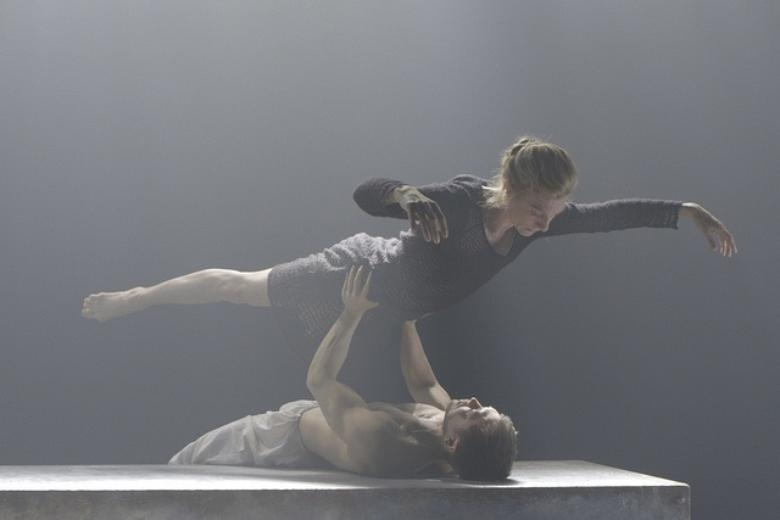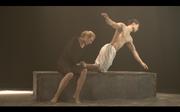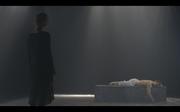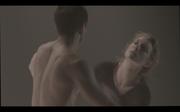Kim Brandstrup
Leda and the Swan

Related Links
This project is listed under...
Project tags:
Premier
5 September 2014
Commisioner
The Royal Ballet
for the Deloitte Ignite Festival 2014
Creative Team
Producer
Lucie Conrad
Director,Choreographer and Editor
Kim Brandstrup
Music
Nico Muhly
Diacritical Marks1.2 & 6
Dancers
Zenaida Yanowsky
Tommy Franzen
Yates poems read by
Fiona Shaw
Cinematographer
Stephen Standen
Sound Design
Ian Dearden
Sound
Paul Parsons
Designer
Ilona Russell
Camera Operator
Dominique Rivoal
Make-up
Florian Zeughan
Scenic Artist
Malcolm Key
Design Assistent
Amy Cooper
Production Electrician
Bruce Allen
Lighting Programmer
Zakk Hein
Lighting Assistant
Jake Charie
Special Effects
John Cox
Co-Editor
Phil Cooper
Dubbing Mixer
Peter Williams
Colourist
Japneet Singh
Runners
Charlotte Wilson
Rebecca Peskett
Special thanks to
VidaMidgelow
Terry Beach
Gill Graham
Leda and the Swan
Royal Ballet
Royal Opera House, Covent Garden , 5 September 2014
Leda and the Swan from kimbrandstrup on Vimeo.
Reviews
"Kim Brandstrup’s masterly Leda and The Swan, which mingles Yeats’s poetry (read by Fiona Shaw) has the texture and heft of proper film-making. Zenaida Yanowsky and Tommy Franzen are transfixing."
-Sarah Compton, The Telegraph
" The best of the videos and best piece of the night was Kim Brandstrup’s Leda and the Swan using the much-loved Zenaida Yanowsky and Tommy Franzen. Sadly there are no pictures or video of the performance I can use on this page, but see here. Brandstrup studied film-making before becoming a choreographer and his understanding of the movement of dancers and camera is peerless and draws you in all the deeper. He also knows how to make his point – in this case two views on the meeting of Leda and the Swan – one violently sexual and the other tender and loving. It’s both emotional sides of a relationship teased out to the max and breathtakingly animated. What life this film has beyond Deloitte Ignite I don’t know, but it deserves much more exposure. And what better advert for Deloitte Ignite and the idea of focusing on the new with a contemporary and ever changing lens. "
- Bruce Marriott , DanceTaps
"Of the three short dance films, all dealing with Leda and the Swan, Kim Brandstrup’s was the standout, picking up on the complexities of divine-mortal union by intercutting two poems by WB Yeats, "Leda and the Swan" and "The Mother of God". Tommy Franzen and Royal Ballet dramatic heavyweight Zenaida Yanowsky dance with each other on top of a stone block that could be a bed, a tomb or an altar, and there are two distinct sections, with each getting a chance to project desire, aggression, and submission. The “flying” with which both sections end is a masterstroke – sexy, unsettling, and unforgettable."
- Hanna Weibye, The Arts Desk
" Most arresting among them is Kim Brandstrup’s offering, where Zenaida Yanowsky is at first grabbed, grappled and whirled into submission by Tommy Franzen’s Swan, then, in a Part Two, comes across a sleeping Franzen and coaxes his somnolent form into her embraces, playing slightly disturbingly with instincts of desire and maternal love before a startling closing image of her lying prone and holding Franzen aloft on her shins. The camerawork is close, the combination of Yanowsky’s long form and Franzen’s compact dynamism is explosive."
- Siobhan Murphy, londondance.com
Leda and the Swan
Programme Note
In the Greek myth of Leda and the Swan, Zeus, disguised as a swan, seduces the mortal Leda. This is often depicted in the paintings and sketches of Leonardo and other Renaissance painters as a pastoral idyll. In these images Leda is frequently surrounded by her children, and the eggs from which they hatched. Blissful, asexual innocence seems to prevail. In Yeats’s poem which, in 1923, he had intended to title ‘Annunciation’, the encounter is overwhelming and violent, explicitly sexual – a rape. In his later poem, ‘The Mother of God’ (1933), some of the imagery and vocabulary of ‘Leda and the Swan’ re-emerges: fluttering wings above, the sudden and incomprehensible apparition, the terror and the helplessness. The film offers two different accounts of the meeting between Leda and the Swan. Inspired by a crossreading of the two poems, the film ventures into the shady territory between power and submission, active and passive, masculine and feminine.
Kim Brandstrup
Leda and the Swan
In the Greek myth of Leda and the Swan, Zeus, disguised as a swan, seduces the mortal Leda. This is often depicted in the paintings and sketches of Leonardo and other Renaissance painters as a pastoral idyll. In these images Leda is frequently surrounded by her children, and the eggs from which they hatched. Blissful, asexual innocence seems to prevail. In Yeats’s poem which, in 1923, he had intended to title ‘Annunciation’, the encounter is overwhelming and violent, explicitly sexual – a rape. In his later poem, ‘The Mother of God’ (1933), some of the imagery and vocabulary of ‘Leda and the Swan’ re-emerges: fluttering wings above, the sudden and incomprehensible apparition, the terror and the helplessness. The film offers two different accounts of the meeting between Leda and the Swan. Inspired by a crossreading of the two poems, the film ventures into the shady territory between power and submission, active and passive, masculine and feminine.
Kim Brandstrup


